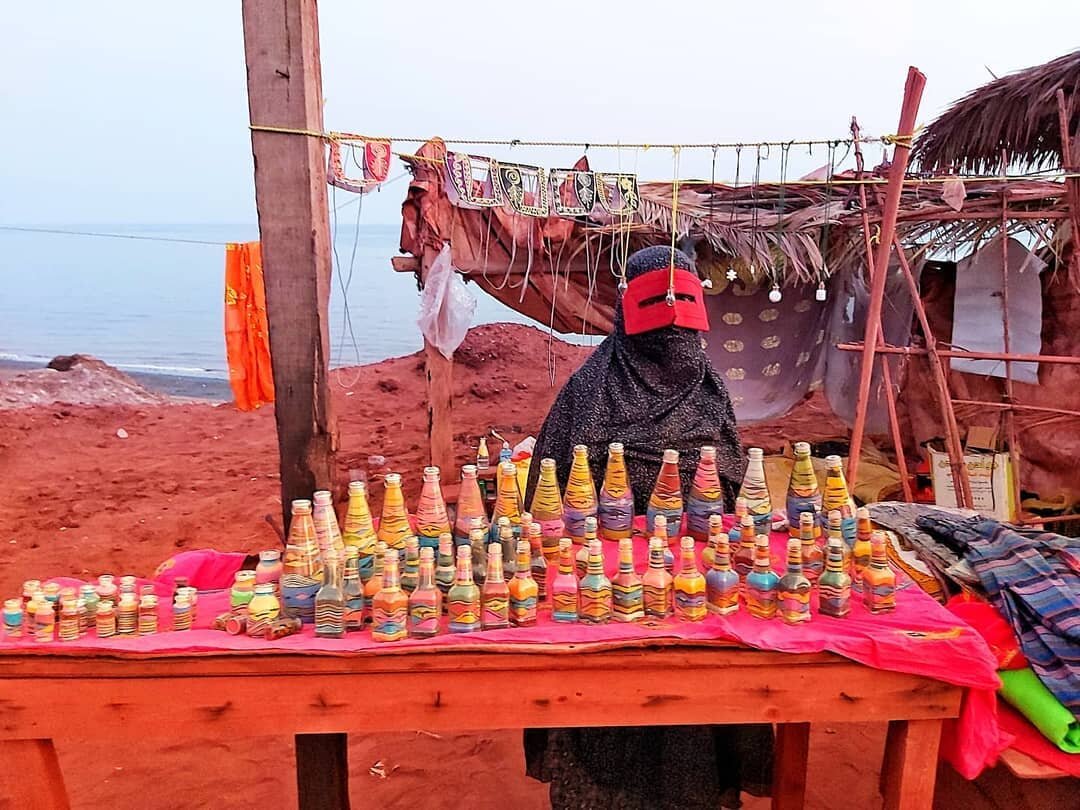A paradise of colors: Hormuz Island’s hues and sights

TEHRAN - With its ocher creeks, crimson beaches, enchanting salt caves, and vibrant landscape, which is adorned with a series of red, orange, and yellow rocks, Hormuz Island is a geologist’s Disneyland.
Some say that the island’s great variety of colors, mainly due to the presence of different mineral deposits and rocks, paints a surreal picture that will surely take your breath away. Here, the water’s color can range in shade from turquoise to royal blue depending on the time of day.
Lying 8 km off the Iranian coast amidst the murky blue waters of the Persian Gulf, Hormuz is a pear-shaped, shimmering salt dome embedded in strata of shale, clay, and ferrous volcanic rock, giving it iridescent hues of red, yellow, and orange the more than 70 minerals found here.
Locals say the island’s red soil is edible, adding the red earth is a kind of sauce that may be spread on flatbread when it is almost done. In addition to culinary uses, the red earth is also used for paintings by local artists, for dyeing, and the manufacture of ceramics and cosmetics.
As mentioned by Dr. Kathryn Goodenough, senior geologist at the British Geological Survey, who previously worked in Iran, shallow seas formed thick layers of salt along the edges of the Persian Gulf hundreds of millions of years ago. These layers gradually collided and overlaid with mineral-rich volcanic sediments in the area, creating a colorful landmass.
“Over the last 500 million years, the salt layers were buried deeply by younger layers of volcanic sediment. Since the salt is buoyant, over time, it has risen through cracks in the overlying rocks to reach the surface and form salt domes,” BBC quoted Goodenough as saying in an article published in October 2021.
Goodenough believes that many kilometers below the land surface, these thick layers of salt actually exist in much of the Persian Gulf.
Hormuz is often called the “rainbow island” because of the spectrum of chromatic hues that it exudes. Extending more than a kilometer, its pale caves and sharp-edged walls are covered by shimmering salt crystals that look like the giant columns of a marble palace.
Some rocks of the island have been weathered into fantastical shapes by thousands of years of wind erosion; with a bit of imagination, one could see birds, dragons, and other mythical creatures. It is like admiring Earth’s very own art gallery.
Despite the island’s surreal, kaleidoscopic natural colors, it is quite an unknown destination for nature lovers.
To fully experience the island’s beauty, visitors can take a short hike up the colorful highlands, which offer unobstructed panoramic views of the entire island. Aside from its geological wonder, the island of Hormuz is also home to an authentic and rich Iranian culture, which is evident in its bustling traditional markets and unique local architecture.
Traditional houses with adobe walls and wooden roofs display the local architecture that has survived through the centuries. In addition, the island is known for its handicrafts, such as glass objects, calligraphy, and pottery, which visitors can purchase as souvenirs.
Visitors may also explore the island’s beautiful beaches, fringed with crystal-clear turquoise waters and fine white sand. The tranquil beauty of the coast offers a perfect retreat from the hustle and bustle of city life where visitors can soak up the sun, go swimming or even enjoy water sports.
Another attraction on the island of Hormuz is ruined fortifications built by Portuguese colonists in the early 16th century. As mentioned by Britannica, the Portuguese conquered Hormuz in 1514 and built a fortress. For more than a century, the island remained Portuguese, but the rise of the local English and the Persian Shahs’ displeasure with Portuguese occupation culminated in the conquest of Hormuz by joint Anglo-Persian forces in 1622.
The island of Hormuz has a unique and diverse wildlife that includes various species of dolphins, turtles, and migratory birds that can be observed in their natural habitats. Among them is the endangered hawksbill turtle, one of the world’s rarest sea turtles, which nests on the island’s beaches between December and January.
AFM
Leave a Comment